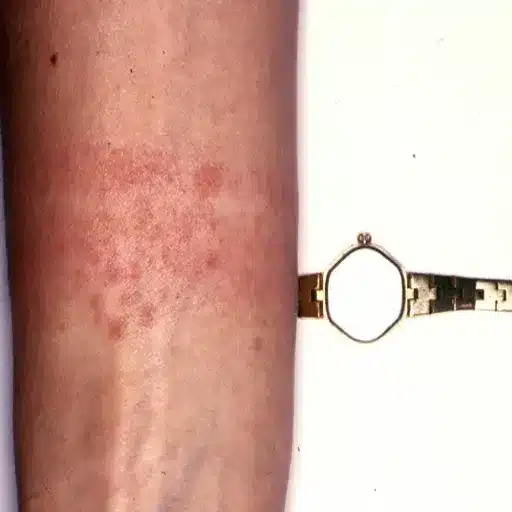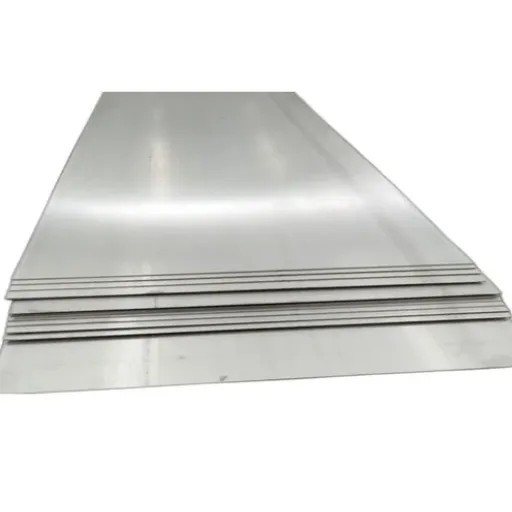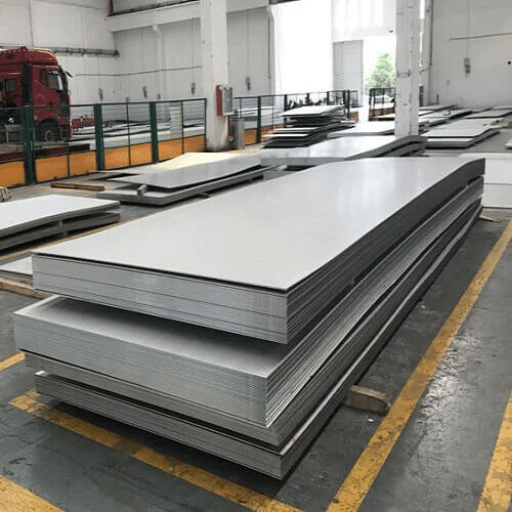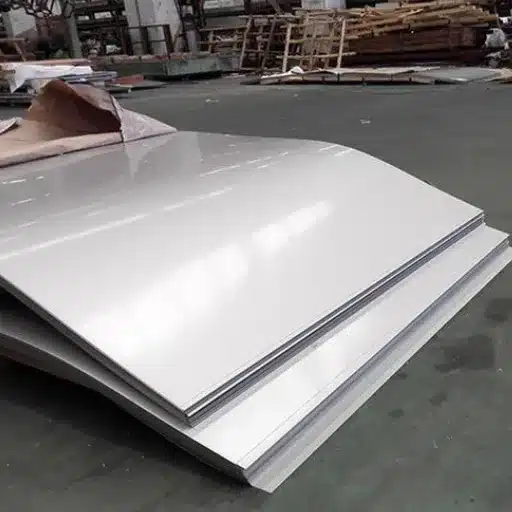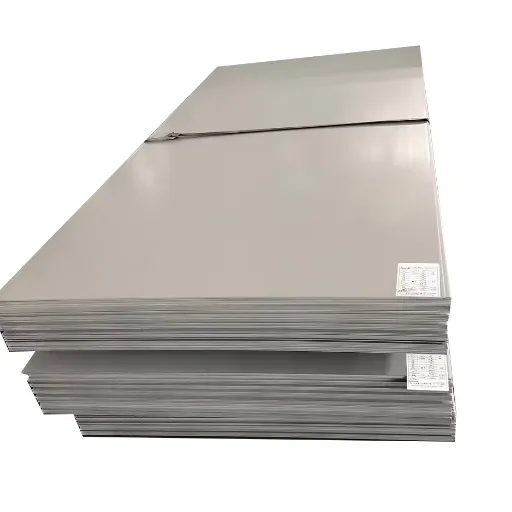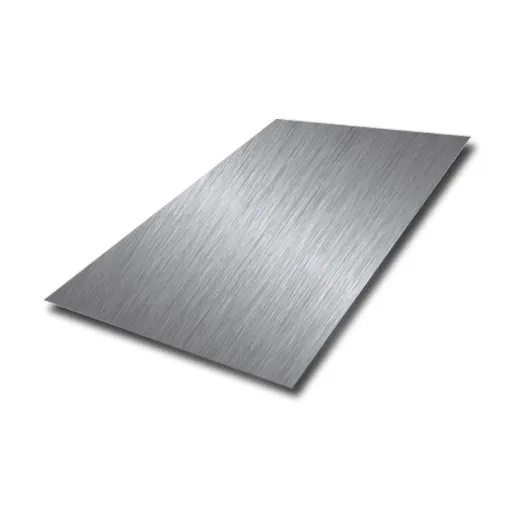While stainless steel jewelry became trendy because of its timeless durability, affordability, and smooth finish, another paramount fear comes up for those with sensitive skin: steel can it irritate or cause an allergy? Being familiar with the material we put against the skin is only good for preventing discomfort or health issues. The article is going to talk about the relation between stainless steel and sensitive skin while explaining stainless steel jewelry composition and offering insights into choosing accessories that fit one’s skin type. For jewelry lovers or sensitive skin, this guide will enable you to take a step toward making choices for your accessories.
Introduction to Stainless Steel
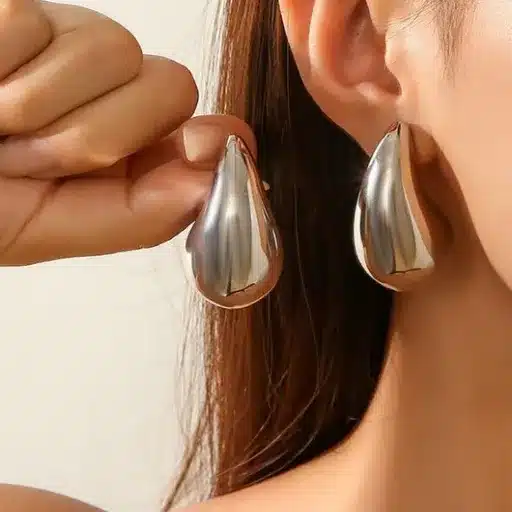
Definition and Composition of Stainless Steel
Stainless steel is strong and versatile. Being primarily made of iron, chromium, and varying amounts of other elements such as nickel or carbon, stainless steel has a few main points of distinction. Its main feature is that it never really rusts or corrodes, a characteristic imparted by chromium. Typically, chromium makes up around 10.5% of stainless steel and it generates a protective film on the metal surface called the passive layer. This layer does not allow rusting or degradation from the air or water.
There exist different grades and types of stainless steel customized for distinct uses. For example, austenitic stainless steel is the most common type; it is strong and nonmagnetic and is used in jewelry and household items. On the other hand, ferritic and martensitic stainless steel possess a different set of properties that make them suitable for industrial applications. The presence of nickel increases the corrosion resistance of stainless steel, whereas the presence of carbon imparts higher hardness and strength to it.
The steel, by its very composition, finds myriad uses in jewelry, cookware, medical instruments, and construction. It is lightweight; it is also hypoallergenic and does not tarnish, which makes it particularly appealing to those with sensitive skin. All this makes stainless steel composition well balanced between strength, looks, and functionality, thus finding usage all around us in everyday life.
Common Uses of Stainless Steel in Jewelry and Everyday Items
Thanks to its strength, affordability, and style, stainless steel serves very well for jewelry-making. The finest quality stainless steel jewelry is less demanding, does not tarnish with time, being resistant to corrosion, and therefore needs less maintenance-it shines with time. Ring, bracelet, necklace, and earring brands are most commonly found that come in numerous designs to appeal to various tastes. It is also great stainless steel jewelry since some people are owing to sensitive skin to other metals.
It is considered a very versatile material unsuitable for everyday items. Stainless steel counters the rust-prone pot, pan, and even utensil down to the highest temperature. Stainless steel finds use in such decorative household appliances as refrigerators, sinks, and dishwashers.
The versatility of stainless steel allows it to be used in times and professional tools. Watches sport stainless steel cases and bands for durability and look. Stainless steel also finds uses in medical instruments, such as surgical tools and implants, giving the materials biocompatibility and resistance to sterilization procedures. These applications emphasize the versatile role of stainless steel in aesthetic and functional realms, thus establishing this material as a trustworthy name across several industries.
The Importance of Understanding Stainless Steel for Sensitive Skin
People with sensitive skin should be aware of the properties of stainless steel to avoid irritation or allergic reactions. Although stainless steel is largely considered hypoallergenic, certain grades may contain small quantities of nickel that do tend to interfere with the highly allergic ones. Surgical-grade stainless steel, for example, 316L or sometimes even 304, is most often suggested for sensitive skin due to its low levels of nickel in combination with having a smoother, non-porous surface that irritates the skin less.
The importance of treated stainless steel for skin contact is underscored in jewelry, watches, and even various medical implants. Good stainless steel will last while also providing comfort to very sensitive skin. High awareness of the varying grades is necessary when making a buying choice because lower cost alloys are very much more likely to cause irritation.
Make inquiries into product specifications whenever in doubt, or ask for recommendations from your dermatologists if you already have skin sensitivities. Normally, the reputable makers would actually advertise the grade of stainless steel they use, so a bit of this information can lead you to an option better for sensitive skins. So, by prioritizing stainless steel of a higher grade, you will get to enjoy all that stainless steel has to offer without compromising your health.
Skin Irritation and Stainless Steel
How Stainless Steel Can Cause Allergic Reactions
Stainless steel has always been the metal for durable wear, resistant to corrosion, but considered allergenic by susceptible persons. The reason primarily behind this lies in the tiny traces of metals such as nickel and chromium, common allergens. In the manufacturing of stainless steel, these metals are introduced to improve the property’s strength and its resistance to rust. When jewelry or other stainless steel materials come into prolonged contact with human skin, particularly with the presence of moisture or sweat, nickel or chromium is released, causing skin irritation or allergic contact dermatitis in susceptible individuals.
Important Statistics:
It has indeed been shown in recent studies that even very small amounts of nickel can provoke an allergic reaction in a nickel-allergic patient. From the statistics in dermatology, about 10 to 20% of the population is affected by nickel sensitivity, making this a very common problem. Chromium, on the other hand, is infrequently allergenic but could also cause irritation dependent upon the grade of stainless steel employed.
Those with known sensitivities should consider choosing types of stainless steel that are hypoallergenic, including surgical grade (316L or 316LVM) stainless steel. Since these grades have been formulated to have much lower nickel release, they are considered suitable for prolonged skin contact. Knowing its classification, stainless steel, and how it interacts with our skin will help you make an intelligent decision and avoid unwanted allergic reactions.
Understanding Nickel and Its Role in Skin Sensitivity
Nickel is a metal that could be found in many items of daily use: jewelry, coins, or other types of stainless steel. Although acting for its strength, corrosion resistance, and versatility, the metal is one of the most common offenders when it comes to contact dermatitis: a form of skin irritation brought about by allergic reaction. When these people come in contact with very small amounts of nickel metals, their immune systems overreact: redness and itching can be felt, the skin will go on to swell, and in the worst case scenario, blistering occurs. To enhance the living quality of an affected person, it is advantageous to lead a life where sources and triggers of nickel exposure are kept in check.
The nickel allergy sets in when nickel ions are released from the metal when it accompanies moisture on the skin surface, such as sweat. The ions will get inside the skin barrier and ignite an inflammatory response through the immune system. Earrings, watches, and belts are more relevant because their frequent and prolonged contact with the skin places great risk of exposure. Stainless steel items may even release nickel depending on the grade used, so it remains recommended for sensitive individuals to select lower-nickel alloys such as 316L or 316LVM stainless steel once possible.
Numerous surveys conducted in more recent times illustrate the situation of wider nickel sensitivity in 10-20% of the human population, with a higher rate in females due to the prolonged period of exposure through the wearing of jewelry. People, thus, can protect themselves better from unnecessary skin irritations by means of awareness and use of hypoallergenic materials. Having a deeper understanding of how nickel intervenes in skin sensitivity will give hope for a better dermatological health and in making decisions in the selection of personal and household items.
Types of Reactions to Stainless Steel: Contact Dermatitis and More
Stainless steel, a metal found in an array of different products, can come up against some unwanted reactions with sensitive people. The most common one is contact dermatitis-an affliction causing redness, itchiness, and inflammation of the skin. It happens when the metal alloys contained by stainless steel, like nickel or chromium, are in prolonged contact with the skin, setting off an allergic response by susceptible individuals.
In addition to contact dermatitis, delayed hypersensitivity could affect some. This means a longer immune response develops for some hours or even days after a person is exposed to an article containing stainless steel, such as jewelry, cookware, or surgical implants. How severe it gets and the type of reaction actually depend on factors like the susceptibility of a particular person to metals, the steel grade, and external environment-especially moisture and perspiration.
Studies also pointed out that stainless steel with fairly higher amounts of nickel and chromium has a tendency to release trace amounts of these metals when the condition of wear or corrosion sets in. This, in turn, may increase irritation or sensitization over time. Therefore, choosing surgical-grade stainless or materials marked clearly as “nickel-free” will help to minimize the chances of adverse reactions with people already ruled out through allergic histories.
Identifying Susceptibility to Skin Irritation

Who Is Most at Risk for Reactions to Stainless Steel?
High-Risk Groups:
- Individuals with metal allergies, especially nickel sensitivity
- People with pre-existing skin conditions like eczema
- Those in certain occupations (surgeons, welders, machinists)
- Individuals with genetic predisposition to metal allergies
Those individuals that are metal-allergic, especially those having an allergy to nickel, would probably face the risk of an allergic reaction when stainless steel is in question. Nickel is the most common metal allergen, and they say even little traces could bring about bad skin reactions in allergic individuals. The allergic reaction occurs if there is a prolonged contact with a nickel-containing material especially when the skin is moist or under pressure from the allergen, like wearers of jewelry or watches that are nickel-based. Certain individuals with pre-existing skin conditions like eczema would notice an increase in sensitization when coming into contact with stainless steel that contains nickel.
Being involved in certain trades or similar activities would make an allergic reaction even more likely. Those who are sharing their workdays with stainless steel in an environment of moisture, chemicals, or repetitive friction might get irritation and sensitization as time passes: a situation concerning surgeons handling surgical stainless steel instruments or workmen handling stainless steel tools. Welders or machinists working on stainless steel materials may indeed, in the absence of appropriate precautions, be exposed to higher percentages of nickel and chromium, which may then increase the likelihood of skin or respiratory ailments.
Genetic and life-state factors also influence susceptibility. Cases show that metal-allergy-prone families have a wide tendency to consist of similar reactions. Prolonged wearing of substandard or inadequately coated stainless steel jewelry would, to a certain extent, aggravate the irritation, especially in hot weather, where sweat would interact with the surface of the steel. Such people can wear hypoallergenic stainless steel or some other substances which would not cause irritation at least, thus reducing their chances of getting irritated.
Pre-existing Sensitivities and Prolonged Exposure
For people with existing sensitivities, understanding the triggers, and adapting to preventive measures reduce skin reactions. It has been found that some physiological factors, like a damaged skin barrier or a heightened immune response, might increase the susceptibility to irritants. Contact dermatitis can also develop as the chances increase with continued exposure to sensitize materials, especially to metals, for nickeling or cobalting, etc., present in common things.
That metal allergies are present in a range between 10 to 20% of the population, with the higher range of percentage found among people having continuous occupational or environmental exposure. For example, there are reported cases of higher irritation rates in industries where there is regular handling of metals, such as construction or jewelry-making. Acting responsibly by using protective equipment, such as gloves or barrier creams, can limit the long-term effects.
These insights, combined with proactive matters-and choices, for example, the selection of good quality, certified hypoallergenic materials, stand as a conclusive approach to minimize discomfort. This approach will work not only for known sensitivities but also for preventing further complications related to long-term interaction with materials.
Recognizing Symptoms of Metal Allergies
Common Symptoms Include:
- Redness and itching at contact points
- Localized rashes
- Swelling of affected areas
- Blistering in severe cases
- Drying or cracking of skin
- Chronic irritation with continued exposure
Mostly, metal allergy symptoms appear on the skin and arise within hours of exposure to an allergen metal such as nickel, chromium, or cobalt. Symptomatic features include redness, itching, and localized rashes. In some people, a more severe reaction with blistering may occur as drying or cracking develops further. Once the skin is battered by continuous irritation, the condition worsens, leading to chronic irritation-disseminated dermatitis.
Studies show that the intensity of reaction depends on the level of exposure to the metal and individual sensitivity. For instance, nickel is considered one of the most common causes of allergic contact dermatitis affecting up to 17% of individuals in studied populations. This further elevates the importance of identifying the sources of potential exposure, like jewelry, watches, eyeglass frames, and even kitchenware.
People can minimize the worsening of allergic symptoms and maintain their skin’s health by paying close attention to the bah signs such as soreness or skin irritation and choosing to wear hypoallergenic alternatives such as titanium or surgical-grade stainless steel.
Prevention and Care for Sensitive Skin
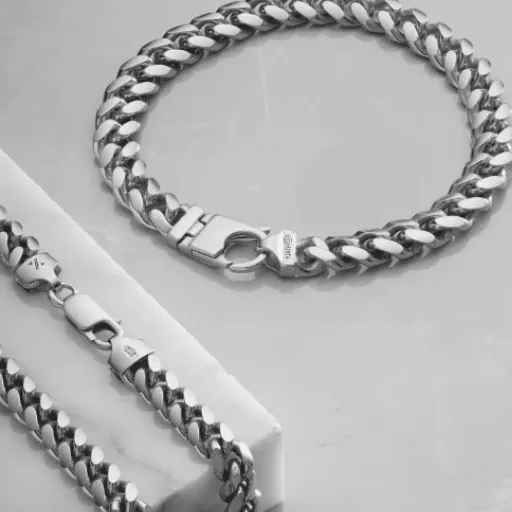
Choosing the Right Jewelry for Sensitive Skin
When it comes to purchasing jewelry for sensitive skin, I always consider hypoallergenic and skin-friendly materials. For example, titanium, surgical stainless steel, platinum, and the likes are good selections because they hardly ever bring about any irritation or allergic reaction. Since nickel is a common allergen causing discomfort to the skin, I steer away from it.
I give emphasis to the brand and workmanship of the jewelry, too, as cheap pieces may have a mixture of metals or a coating that can wear off over time and expose one’s sensitive skin to irritants. Higher-quality pieces, ones that hold certain certifications, will almost always be more durable and less likely to cause an adverse reaction. It’s even wise to look for product labeling for metal content or to ask an associate when buying new pieces.
The last step I take is to care for my jewelry properly; this also keeps skin troubles at bay. Cleaning my earrings, necklaces, and so forth removes buildup of oils and dirt that can be irritants. When I find redness or irritation, I stop wearing the piece and apply cooling cream to the affected area right away. With these simple steps in place, jewelry-wearing has been a safe joy for me and my sensitive skin.
Practical Tips to Prevent Skin Irritation from Stainless Steel
- Choose High-Quality Stainless Steel: Better quality stainless steel causes a very rare niggle. They are hypo-allergenic types like surgical stainless steel (316L or 316LVM), which drop low in nickeling, thereby causing rare skin reactions. Not so low-level material will give rise to corrosion and tarnishing of stainless steel, in milliseconds of turning into small irritants on the surface.
- Create a Protective Barrier: Clear nail polish or a jeweler’s sealant maybe applied on the stainless steel parts which come in direct contact with your skin. For the protection of your skin, just consider it a seal.
- Keep the Stainless Steel Clean and Dry: Clean and dry your stainless steel items regularly to remove any dirt, sweat, and other oils that may cause itching on skin. The stainless steel item, if wet, could lead to skin irritation and bacteria formation.
- Limit Prolonged Wear: Keep your skin from stainless steel jewelry, especially during hot and humid conditions, when sweat will aggravate irritation. Change to other materials such as gold and silicone to prevent overexposure to the skin.
- Monitor Your Skin’s Reaction: Pay close attention any time the skin comes into contact with stainless steel. Should any redness, itching, or discomfort set in, take off the item and treat the area with a nonirritating ointment or cream. And if it becomes impossible to keep the affected area away for a while, try some over-the-counter hydrocortisone to calm the inflammation.
- Consult a Professional if Necessary: Consult a dermatologist for assistance when the reaction is lasting. They might recommend that you get patch-tested to identify a nickel allergy or direct you to hypoallergenic items suited to your skin.
Your life will have minimized skin allergy experiences with these few strategies while still appreciating the strength and stylistic design of stainless steel accessories.
Maintaining Your Jewelry to Minimize Skin Reactions
Proper care is necessary to maintain jewelry in good condition while minimizing potential skin reactions. Duly cleaning is a step one should not overlook since the accumulation of dirt or sweat can increase irritation. Use a soft lint-free cloth to wipe your jewelry and remove residues. For stainless steel pieces, a mild soap solution and warm water can be used for deeper cleaning, just remember to ensure it is completely dry before wearing it.
Besides this, a proper storage regimen is equally important. Store your accessories in a dry cool place, preferably inside individual pouches or compartments lined with cloth. This prevents scratches on one hand and limits the humidity from exposure, which contributes to tarnishing over time. Don’t wear your jewelry while performing activities involving long durations of contact with water, such as swimming or sweating profusely, as this could wear down the coating and trap moisture that sits against the skin.
Lastly, you may want to use clear nail polish with hypoallergenic properties on jewelry contact surfaces to build a barrier for the wearer. This is especially useful for sensitive skin or nickel allergies. Through constant care and preventive measures, you can considerably increase jewelry life and decrease the possibility of an adverse reaction against the skin.
Exploring Alternative Materials

Hypoallergenic Jewelry Options for Sensitive Skin
For those with sensitive skin or allergies to metals, choosing the proper material for the jewelry is of utmost importance, as the wrong material can cause irritation and discomfort. Hypoallergenic means substances that are unlikely to cause an allergic reaction in the skin. Among the most common are:
- Titanium: Titanium is an excellent choice for persons with a metal sensitivity due to its lightness and durability, as well as resistance to corrosion. They are an ideal option to wear day in and day out, biocompatible, and are often employed for implants in the medical field.
- Surgical Stainless Steel: Used commonly in the medical field, its nickel content is kept so low that it does not dissolve out, thus making allergic reactions less common.
- Platinum: Hypoallergenic and elegant, platinum is heavy, luxurious, and rarely causes itching to those who have legitimate allergies.
- Niobium: Niobium is reputed to be an allergic metal. It is soft and highly inert and anodizable for strikingly beautiful colorful finishes.
- Sterling Silver (Nickel-Free): While traditional silver contains some amount of nickel, nickel-free variants are widely available and are friendlier to the skin.
Some modern services would include hypnogele-wear, touted for their flexibility and allergy-free nature; as well as wood or glass adornments for unique, natural alternatives. In fact, many makers are going fully hypoallergenic with their jewelry collections, and you can thus find plenty of chic pieces safe for your sensitive skin. When buying jewelry, always check for specific markings indicating ‘nickel-free’ or hypoallergenic. That way, you ensure it is good for your skin.
Comparison of Different Grades of Stainless Steel
There are various grades of stainless steel, which are categorized depending on chemical composition, properties, and targeted application. However, some of the most commonly used include 304, 316, and 430, each of which possesses its own benefits for different purposes.
| Grade | Composition | Properties | Applications |
|---|---|---|---|
| 304 | Chromium and nickel-based | Corrosion and oxidation resistant, versatile | Kitchen appliances, cookware, industrial equipment |
| 316 | Higher molybdenum content than 304 | Enhanced corrosion resistance, durable | Marine, pharmaceutical, medical devices |
| 430 | Ferritic, less nickel content | Magnetic, cost-effective, stress corrosion resistant | Automotive trim, home appliances |
Summary-wise, a few factors to consider when comparing these grades are resistance, appearance, and cost. For example, whilst 304 and 316 are rather expensive, they can last longer in corrosive environments. Conversely, 430 does not require extensive corrosion protection and thus serves as a cost-efficient option where this can be afforded in return. Knowing the contrasts between these grades will ensure that the right material is chosen for every need.
Understanding Hypoallergenic Properties of Various Metals
Consideration of the hypoallergenic nature of metals is rather significant when it comes to jewelry, medical implants, and wearable technology. Titanium and surgical stainless steel are thought to be hypoallergenic metals due to their poor reactivity upon contact with the human skin. Using titanium for implants and medical devices is very much common because it is a biocompatible and lightweight metal. Surgical steel, with an example being stainless steel grade 316L, is highly resistant to corrosion, with very little amounts of nickel, a common allergen, deposited into the skin, making it a good choice for those with sensitive skin.
On the other hand, such materials as nickel and alloys with very high percentages of it are more prone to cause allergic reactions in sensitive individuals. Nickel allergy is one of the most frequent causes of allergic contact dermatitis worldwide. Gold and platinum, especially in their purer forms, are generally hypoallergenic, although lower karat golds may contain common alloyed metals capable of eliciting certain allergic reactions.
It is necessary to know what metal or alloy one is dealing with before purchasing or manufacturing anything intended for prolonged contact with the skin. By focusing on the specific needs of the user and the kind of environment in which the metal is to be used, rational decision-making will reduce the risk of hypersensitivity and increase product safety.
References
-
The allergic and irritating reactions to metallic implants with trauma-orthopaedic patients
This paper discusses allergic and irritant reactions caused by metallic implants, including stainless steel. -
Surface characterization of 316L stainless steel for biomedical applications
This study examines the surface properties of stainless steel and its potential to cause skin irritation or allergic reactions. -
Material Safety Data Sheet (AMS225)
This safety data sheet provides information on stainless steel, including potential risks of skin irritation. - Click here to read more.
Frequently Asked Questions (FAQ)
Q: Does stainless steel irritate the skin?
A: For most people, stainless steel is safe, though, in some cases, it can cause irritation. The irritation may be generated by the very specific grade of stainless steel used and more often than not, it is associated with the presence of nickel, which relatively few people have allergic reactions to being sensitive.
Q: Which stainless steel is good for people with sensitive skin?
A: For those with sensitive skin, 316L grade stainless steel is recommended because it contains less nickel and is therefore less likely to cause an allergic reaction. Its usage is common in the jewelry trade, where it is labeled hypoallergenic.
Q: How can stainless steel jewelry cause a reaction?
A: If you are allergic to nickel, you will get a reaction from wearing nickel-containing stainless steel jewelry. To avoid reactions, one should, therefore, wear stainless steel jewelry made of the 316 or 304 type.
Q: How would I know if my stainless steel jewelry is hypoallergenic?
A: Generally, when jewelry is labeled hypoallergenic, it means it contains less nickel. Look for marks showing the stainless steel’s grade, and 316L stainless steel is a good indicator.
Q: What to do if my skin reacts against stainless steel?
A: If you start having some kind of skin irritation that you think might be related to stainless steel, I would recommend just not wearing stainless steel jewelry. These are more likely to cause allergic reaction: sterling silver jewelry and gold jewelry.
Q: Is any other type of stainless steel jewelry safe for sensitive ears?
A: Some stainless steel jewelry is not safe for sensitive ears. Even though stainless steel is generally considered hypoallergenic, some pieces contain nickel or something else that can irritate sensitive skin. So, always check before making a purchase.
Q: What else can people wear instead of stainless steel jewelry?
A: Yes, there are a number of alternatives to stainless steel for jewelry. Sterling silver jewelry and gold jewelry are favorites for people who might react to metals. Costume jewelry is an option as well, but you really need to check for nickel content.
Q: What are the symptoms of jewelry irritation?
A: Any jewelry that produces an irritation will cause redness, itching, swelling, or rashes and a rash on the skin where it has been worn, among other symptoms. If you experience any of these symptoms, consider that maybe it is because of allergic reactions to one of the metals, including nickel, contained in that jewelry.
Q: If I have metal allergies can I wear stainless steel?
A: If you have metal allergies, stainless steel jewelry may still be safe for you, particularly if it’s made of lower nickel content such as 316L grade. You should observe any reactions your skin is having to it and if your skin starts to irritate, avoid the use of stainless steel jewelry.

